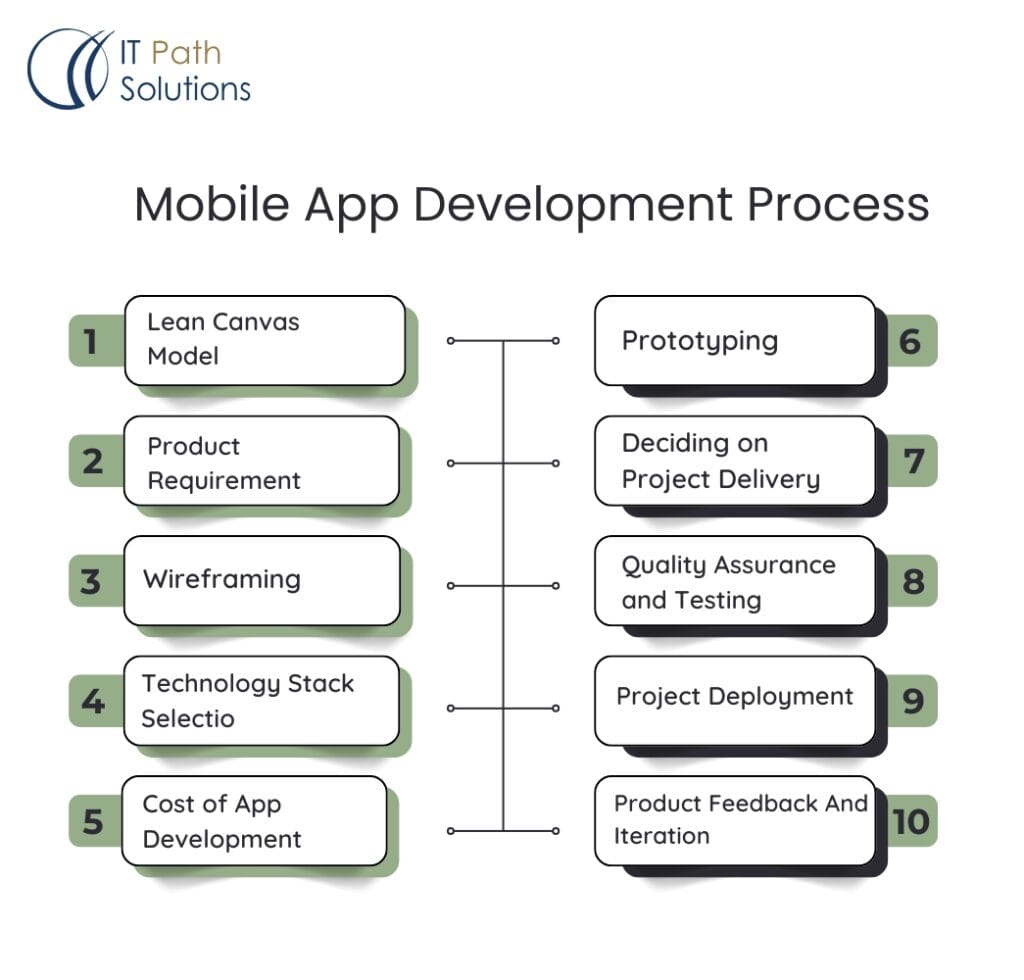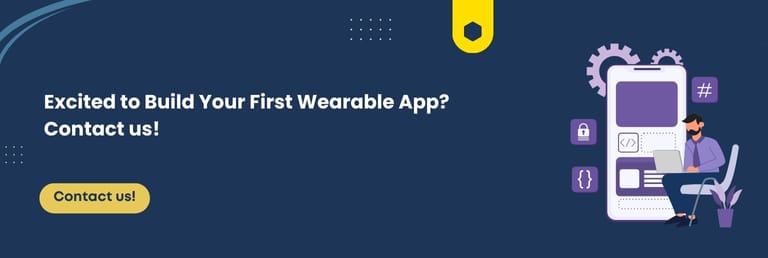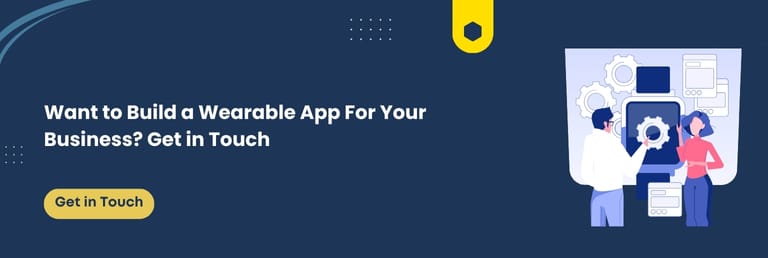Most Promising Handbook For Wearable App Development
Keyur Patel
September 12, 2025
9 min
The market for wearable apps is still young and growing. This means you have a fair chance to consider developing a wearable application for business growth. Wearable app development is a highly profitable business today and includes developing devices like smartwatches, fitness bands, medical-grade sensors, etc. These devices have become an indispensable part of our daily lives, as they allow us to check messages with our fingertips, track health-specific milestones, and more.
If you look into the statistics, the number of wearable connected devices is around 560 million in 2024. The industry has only evolved, all for good reasons, and has reached a stage where it is today’s most demanding industry. In this blog, we will deep dive into all the details of wearable technology, its benefits, and the challenges associated with wearable app development.
What is Wearable Technology?
Wearable technology refers to electronic devices designed to be worn on the body, such as smartwatches, smart glasses, and fitness trackers. These devices are specifically built to capture vast amounts of data throughout the day.
Equipped with advanced sensors, wearable devices continuously collect data and transmit it to dedicated applications for processing. The collected information is analyzed based on predefined metrics and processed using compact microprocessors.
Furthermore, connectivity features like Bluetooth and Wi-Fi enhance the functionality and accessibility of wearable applications, ensuring seamless data transfer and real-time monitoring.
Types of Wearable Devices That Businesses Can Develop:

Well, there are only a few wearable platforms that are known to the common man today. But the next section of this topic will leave you stunned as you explore the various wearable device types that you can capitalize on.
- Head: Smart helmets;
- Body: Chest straps, skin patches, smart clothing
- Arms: skin patches, smart trackers, sports clothing;
- Eyes: Glasses, smart contact lenses;
- Ear: Headphones, Hearing trackers;
- Wrist: Smartwatches, trackers;
- Legs: Sports, medical devices, military clothing.
Why do we need wearable technology? What are the benefits of wearables for different industries?
Do you recall the excitement when the first Apple Watch was launched? It quickly captured attention and gained popularity over the years. Since then, wearable technology has seamlessly integrated into daily life, enabling users to track essential health metrics and enhance their overall well-being.
Here are some key benefits you can achieve with wearable technology.
- Wearable devices monitor health metrics and constantly update users notifying them to work on their health.
- Advanced wearable devices can also assist in payment processing, Google Maps Navigation, and message response.
- It provides proactive suggestions to users for improving health.
- Gamification elements engage users to a greater extent encouraging them to focus on their health.
Now, let us look into the benefits of wearables for different industries.
Advanced technology integration is taking wearable development to the next level. The experiences it provides users compel them to invest in securing at least one device. Here are the industries that will benefit from wearable app development.

Healthcare:
Wearable sensors have been used in the healthcare industry for some time now, and they have evolved magnificently over the years. Wearable devices monitor heart rate, quality of sleep, respiratory functions, and more. They help healthcare practitioners forecast patients’ health without being physically present with them 24/7.
According to an Accenture study, 33% of respondents had adopted wearables in 2018. Additionally, 72% of consumers have agreed to share their personal data from wearable devices with insurance companies.
With advancements in technology, there is more than just tracking that wearable devices can achieve now. Here are a few examples of wearable technology devices that you can build for healthcare monitoring:
- Wearable fitness trackers;
- Smart health watches;
- Body-mounted sensors: Example: ECG monitors, blood pressure monitors, bio-sensors detecting pulse rate, blood oxygen, and glucose levels.
Retail and Fintech:
Wearable devices supported by mobile apps can now be used by the fintech industry to support contactless payments. Some of the popular examples of payment apps based on wearable app development are Apple Pay and Google Pay.
Education:
The integration of AR/VR with wearable technology has the potential to revolutionize education. For instance, devices like Google Glass can provide in-depth insights into complex subjects, such as detailed anatomical structures, by overlaying comprehensive information in real-time. Additionally, wearable devices can assist researchers in studying microscopic molecules, enhancing scientific exploration and learning.
Wearable gaming technology:
Customers quickly adapt to devices that engage them in one way or another. The popularity of Virtual Reality in wearable devices is rising, leading to more customers wanting to experience gaming features better.
Virtual reality wearable devices are high in demand these days. These devices provide an immersive user experience taking customers to a completely new world.
Haptic devices + gaming have been in the trends for a long time now. However, we can integrate this, into wearable devices to make haptics more accessible and useful to the consumers.
Wearables in Fashion:
Have you heard of the term Intelligent Fashion? If you haven’t, well it probably designing smart garments and accessories combined with technology. The fashion industry can design smart devices that change color to match the color of the outfit or design a smart bag that acts as a charger for your phone.
There is also the availability of smart fabrics, currently used by Levis for measuring biometrics. The clothing designed using smart fabrics can adjust the temperature and enhance the blood flow. According to the report by Statista, the global smart clothing and fabrics market size is estimated to substantially grow from 2018 to 2025.
Challenges In Wearable App Development:
Developing a wearable app development comes with its own set of challenges which we have highlighted below.
-
Limited screen size:
If you are wearing any of the wearable devices right now, be it a smartwatch or a fitness tracker, you probably know the pain. The limited screen size blocks the possibility of interactions with customers. However, a quick fix is that you should prioritize important information to be displayed on the screen while designing it.
-
Battery issues:
Well, it looks like wearable device vendors have been struggling for years with the battery issue. The smaller batteries lessen the efficiency of wearable devices and is a major concern faced during app development.
-
Connectivity Issues:
Wearable devices need a stable connection for functioning. Any disruption either on mobile internet or device, affects the user experience.
-
User Interface:
Considering all of the above challenges, it is indeed a struggle to design a UI that looks intuitive and doesn’t drain the battery. This challenge can be addressed efficiently by an experienced app development company in the field.
The well-versed mobile app development company knows the knicks and knacks of UI flow, content display, optimized flow, etc, and designs a clutter-free UI.
-
Privacy and Security:
Wearable devices are designed to monitor and collect users’ data that they are trained for. However, the collected data is personal and often at the risk of data breach. If left unprotected, it can leak highly sensitive user data and private information. This is why, it is crucial to protect user’s data.
-
Hardware limitations:
A wearable application is often used across multiple platforms. It can get difficult to maintain a consistent flow across devices under a stress testing environment.
What Are The Essential Features of Wearable Applications?
In today’s time, mobile app acts as a panacea for everything. However, for every application that users access, its features play a crucial role in deciding the success of the application.
At IT Path Solutions, we have studied all popular wearable mobile apps and curated a list of wearable app features, especially for you.
| Feature | Functioning |
| Personalized notification | The app designers should design a notification panel that looks impressive and conveys a message even in the short space available. |
| User-friendly interface | Design an ergonomically assembled interface that loads quickly upon giving a response |
| Cloud, Security, and Data | You need to develop a secured storehouse for all the data collected and shared across the platform. However, make sure that all the standards are properly matched and that there is no possibility of a data breach. |
What is the cost of developing a Wearable App?
Wearable application development cost usually ranges between $35,000 to $1,00,000 or more. However, this price range is very subjective and depends upon your project requirements.
The more complex your project requirements are, the higher the application development price is. Additionally, the cost of wearable app development also depends on wearable app features, technology stack, location of app development company, hourly rates, etc.
List Of a Few Succesful Wearable Apps:
Carrot Weather:
Carrot Weather is the most unique and engaging wearable weather app ever. With its hilariously twisted forecasts and stunning design, it turns checking the weather into an entertaining experience.
Moodistory:
MoodSitry is your personal wearable app that tracks your mood daily. Gain insights into your emotions, identify patterns, and improve your well-being over time. Stay mindful with personalized mood analytics at your fingertips!
Seven-7 Minute Workout:
Seven-7 Minute workout app keeps track of your body and is one of the best wearable training apps in the industry.
What is the Mobile app development process for developing a wearable application?
Mobile application development is a complex task, especially when it involves many intriguing data management operations. At IT Path Solutions we have broken the complex app development process into step-by-step processes to achieve the desired output. Here is an image that briefly describes our app development process. For a detailed understanding of the mobile app development process, please read our blog.

Conclusion:
As a wearable app development company, we understand that every app development idea in this segment will have its unique needs. At IT Path Solutions, we embrace the customization approach and deliver you a tailor-made solution. Our communication is kept easy and transparent so you have updates about your application from time to time.
The wearable app development market is expected to grow in the future and it is the right time to take advantage of the market opportunity and build an app for your business. If you have any queries regarding the same, feel free to get in touch with us.
Keyur Patel
Co-Founder
Keyur Patel is the director at IT Path Solutions, where he helps businesses develop scalable applications. With his extensive experience and visionary approach, he leads the team to create futuristic solutions. Keyur Patel has exceptional leadership skills and technical expertise in Node.js, .Net, React.js, AI/ML, and PHP frameworks. His dedication to driving digital transformation makes him an invaluable asset to the company.
Get in Touch
Search
Blog Categories

